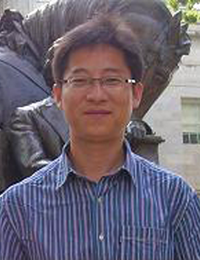
Dr. Changliang Shao
Research Associate, Michigan State University
Landscape Ecology & Ecosystem Science (LEES)
Google Scholar | Research Gate | clshao@msu.edu | 517-974-1750
Awards & Services
- US-China Carbon Consortium (2009-present)
- Foundation of Chinese Academy of Sciences (2009-2011)
- NSFC (2008)
- NASA LCLUC Science Team (2005-2008)